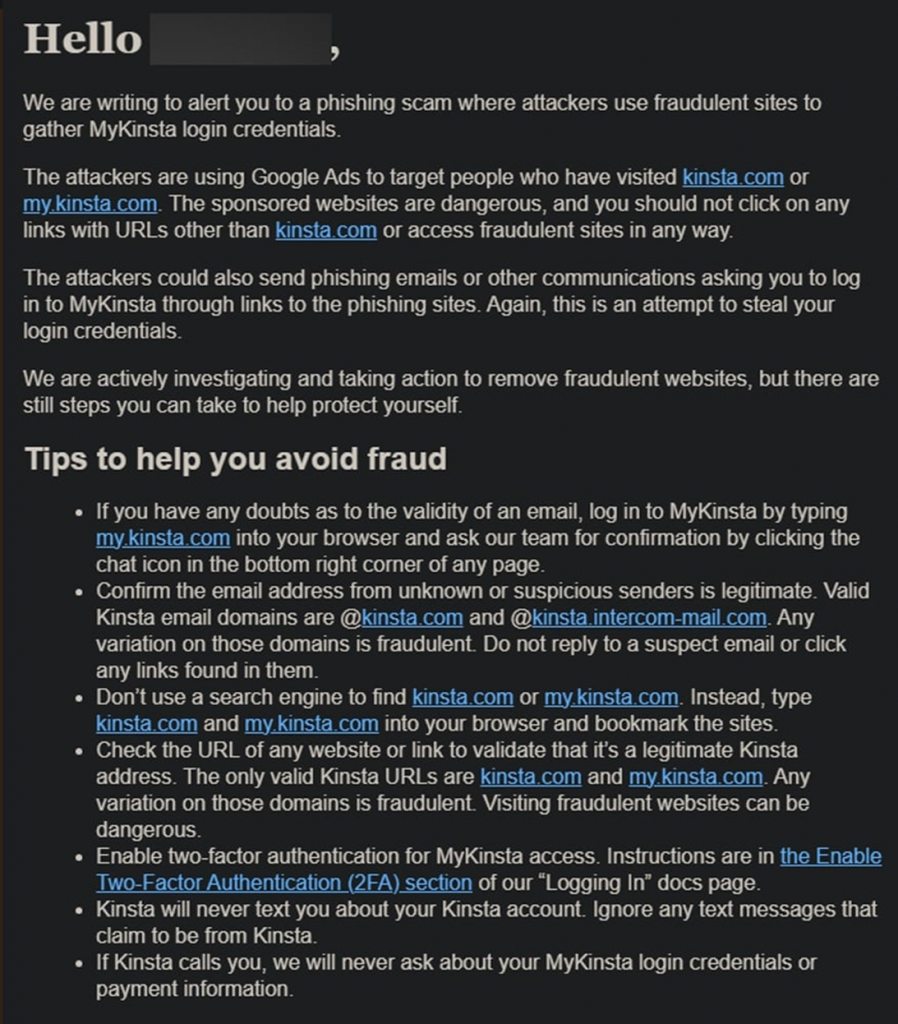How not to fall for the bait of cybercriminals using popular advertising platforms.
Representatives of Kinsta, a hosting provider for WordPress sites, recently discovered that phishing sites are actively distributed through Google Ads, which aims to steal the credentials of MyKinsta, a key service for managing WordPress sites and other cloud applications.
In an email sent by Kinsta to its customers, it says that the attackers are using Google ads to target people who have previously visited official Kinsta websites. Attackers create fake websites that completely mimic a legitimate service, tricking users into going there.

In its letter, the company emphasizes the danger of phishing sites and strongly recommends that you avoid clicking on any links that differ from the official "kinsta [.] com" or " my.kinsta[.]com». Ideally, add them to your bookmarks and open them exclusively from there to permanently close the issue of manipulating search results and promoting fake pages.
In addition, the company advises you to enable two-factor authentication in your accounts to prevent access to them even if your credentials are stolen.
Kinsta also warned customers that attackers can send phishing emails to their email addresses or use other forms of communication, including SMS and instant messengers, to convince users to log in to the MyKinsta platform through a fake website.
In response to emerging threats, Kinsta representatives actively identify and block such phishing sites, but they also encourage users to take active steps to protect their accounts themselves.
It is worth noting that manipulation of Google Ads is one of the favorite forms of fraud among modern phishers. Even an attentive user can be caught off guard by such traps, as they can sometimes use a complex redirection system that allows you to display a completely legitimate URL in an ad block, and in fact send the victim to a malicious page.
Representatives of Kinsta, a hosting provider for WordPress sites, recently discovered that phishing sites are actively distributed through Google Ads, which aims to steal the credentials of MyKinsta, a key service for managing WordPress sites and other cloud applications.
In an email sent by Kinsta to its customers, it says that the attackers are using Google ads to target people who have previously visited official Kinsta websites. Attackers create fake websites that completely mimic a legitimate service, tricking users into going there.

In its letter, the company emphasizes the danger of phishing sites and strongly recommends that you avoid clicking on any links that differ from the official "kinsta [.] com" or " my.kinsta[.]com». Ideally, add them to your bookmarks and open them exclusively from there to permanently close the issue of manipulating search results and promoting fake pages.
In addition, the company advises you to enable two-factor authentication in your accounts to prevent access to them even if your credentials are stolen.
Kinsta also warned customers that attackers can send phishing emails to their email addresses or use other forms of communication, including SMS and instant messengers, to convince users to log in to the MyKinsta platform through a fake website.
In response to emerging threats, Kinsta representatives actively identify and block such phishing sites, but they also encourage users to take active steps to protect their accounts themselves.
It is worth noting that manipulation of Google Ads is one of the favorite forms of fraud among modern phishers. Even an attentive user can be caught off guard by such traps, as they can sometimes use a complex redirection system that allows you to display a completely legitimate URL in an ad block, and in fact send the victim to a malicious page.
